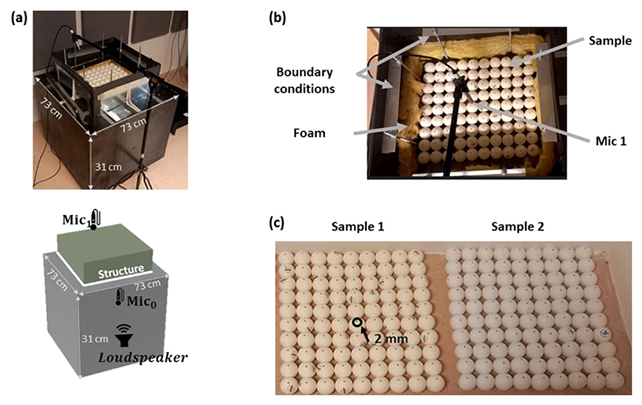If you find yourself bothered by low-frequency urban sounds – think traffic, aircraft, and the other rumbles of the city – then the humble ping pong ball offers a low-cost way of blocking it out, a new study proves.
Low-frequency noise is known to be bad for our health, but it's also difficult to block out. It's often coming from multiple directions, and isn't blocked by walls and structures in the same way that high-frequency noise is.
To combat low-frequency noise, researchers from the University of Lille in France and the National Technical University of Athens in Greece used ping pong balls as Helmholtz resonators; containers specially designed to absorb certain sound frequencies.

Named after the German physicist who made the original Helmholtz resonator, Hermann von Helmholtz, the devices consist of an empty chamber, like a ping pong ball, with a small opening.
"Ping pong balls are well-known, everyday objects, present in large numbers all over the world," says physicist Robine Sabat from the University of Lille.
"Our motivation was to use these easily accessible objects to create a low-frequency insulating panel structure. Ping pong balls therefore present an economical alternative to acoustic insulators for both low cost and potential recycling."
As the name suggests, Helmholtz resonators work through resonance, matching the oscillations of sound waves in order to absorb them. The volume of the container and the size of the opening determine the frequency of sound the resonator can absorb.
While Helmholtz resonators have been extensively studied before, the researchers wanted to look at how they might work and interact when they were combined to form an acoustic metasurface; materials specially engineered to manipulate sound waves in different ways.
This combining or coupling was shown to increase the number of resonance frequencies absorbed by the ping pong ball acoustic metasurface. In other words, more sound could be blocked by using multiple Helmholtz resonators together.
"The Helmholtz resonator has the unique ability to capture ambient sound waves precisely at its natural frequency and can be represented as cavities connected to their environment via a narrow neck," says Sabat.
"The originality of the work was to consider the effect of the coupling between two resonators, leading to the occurrence of two resonance frequencies."
Using a combination of mathematical modeling and actual experimentation, the researchers showed the way multiple HRs interact with each other can be manipulated to control the sound frequencies that get blocked.
And while there wasn't any extensive field testing of ping pong balls blocking specific noises, there is potential for these ubiquitous and affordable objects to be used in protecting against noise pollution – and more.
"The potential of this metasurface extends beyond sound insulation," says Sabat. "It can be broadened to achieve various functions similar to other metasurfaces."
"These functionalities encompass sound focusing, unconventional sound reflection, sound transmission manipulation, and more."
The research has been published in the Journal of Applied Physics.
